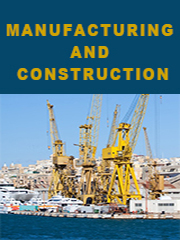Report overview
Vacuum concentrators use centrifugal force to concentrate or evaporate multiple samples, under vacuum, for further analysis. The vacuum concentrators or vacuum centrifuge concentrator concentrates solutes from a liquid sample into a dry state or a wet pellet state.
This report aims to provide a comprehensive presentation of the global market for Vacuum Concentrators, with both quantitative and qualitative analysis, to help readers develop business/growth strategies, assess the market competitive situation, analyze their position in the current marketplace, and make informed business decisions regarding Vacuum Concentrators. This report contains market size and forecasts of Vacuum Concentrators in global, including the following market information:
Global Vacuum Concentrators Market Revenue, 2018-2023, 2024-2029, ($ millions)
Global Vacuum Concentrators Market Sales, 2018-2023, 2024-2029, (Units)
Global top five Vacuum Concentrators companies in 2022 (%)
The global Vacuum Concentrators market was valued at US$ 45 million in 2022 and is projected to reach US$ 67 million by 2029, at a CAGR of 5.6% during the forecast period. The influence of COVID-19 and the Russia-Ukraine War were considered while estimating market sizes.
In the global vacuum concentrator market, the Asia-Pacific region is the largest consumer region, accounting for about 35% of the market share, followed by North America, accounting for about 33% of the market.
Thermo Fisher Scientific, Labconco, Eppendorf, SP Industries, Inc. and Martin Christ, etc. are some of the key players in the global Vacuum Concentrators market. The top five manufacturers held 62% share of the market, in terms of Vacuum Concentrators revenue in 2019.
We surveyed the Vacuum Concentrators manufacturers, suppliers, distributors and industry experts on this industry, involving the sales, revenue, demand, price change, product type, recent development and plan, industry trends, drivers, challenges, obstacles, and potential risks.
Total Market by Segment:
Global Vacuum Concentrators Market, by Type, 2018-2023, 2024-2029 ($ Millions) & (Units)
Global Vacuum Concentrators Market Segment Percentages, by Type, 2022 (%)
Individual Vacuum Concentrators
Integrated Vacuum Concentrators
Global Vacuum Concentrators Market, by Application, 2018-2023, 2024-2029 ($ Millions) & (Units)
Global Vacuum Concentrators Market Segment Percentages, by Application, 2022 (%)
Academic and Research
Biotechnology and Pharmaceutical
Hospitals and CDC
Others
Global Vacuum Concentrators Market, By Region and Country, 2018-2023, 2024-2029 ($ Millions) & (Units)
Global Vacuum Concentrators Market Segment Percentages, By Region and Country, 2022 (%)
North America
US
Canada
Mexico
Europe
Germany
France
U.K.
Italy
Russia
Nordic Countries
Benelux
Rest of Europe
Asia
China
Japan
South Korea
Southeast Asia
India
Rest of Asia
South America
Brazil
Argentina
Rest of South America
Middle East & Africa
Turkey
Israel
Saudi Arabia
UAE
Rest of Middle East & Africa
Competitor Analysis
The report also provides analysis of leading market participants including:
Key companies Vacuum Concentrators revenues in global market, 2018-2023 (Estimated), ($ millions)
Key companies Vacuum Concentrators revenues share in global market, 2022 (%)
Key companies Vacuum Concentrators sales in global market, 2018-2023 (Estimated), (Units)
Key companies Vacuum Concentrators sales share in global market, 2022 (%)
Further, the report presents profiles of competitors in the market, key players include:
Thermo Fisher Scientific
Labconco
Eppendorf
SP Industries, Inc.
Martin Christ
LaboGene
Gyrozen
Beijing Jiaimu
Hunan Herexi
Beijing Boyikang
Outline of Major Chapters:
Chapter 1: Introduces the definition of Vacuum Concentrators, market overview.
Chapter 2: Global Vacuum Concentrators market size in revenue and volume.
Chapter 3: Detailed analysis of Vacuum Concentrators manufacturers competitive landscape, price, sales and revenue market share, latest development plan, merger, and acquisition information, etc.
Chapter 4: Provides the analysis of various market segments by type, covering the market size and development potential of each market segment, to help readers find the blue ocean market in different market segments.
Chapter 5: Provides the analysis of various market segments by application, covering the market size and development potential of each market segment, to help readers find the blue ocean market in different downstream markets.
Chapter 6: Sales of Vacuum Concentrators in regional level and country level. It provides a quantitative analysis of the market size and development potential of each region and its main countries and introduces the market development, future development prospects, market space of each country in the world.
Chapter 7: Provides profiles of key players, introducing the basic situation of the main companies in the market in detail, including product sales, revenue, price, gross margin, product introduction, recent development, etc.
Chapter 8: Global Vacuum Concentrators capacity by region & country.
Chapter 9: Introduces the market dynamics, latest developments of the market, the driving factors and restrictive factors of the market, the challenges and risks faced by manufacturers in the industry, and the analysis of relevant policies in the industry.
Chapter 10: Analysis of industrial chain, including the upstream and downstream of the industry.
Chapter 11: The main points and conclusions of the report.
